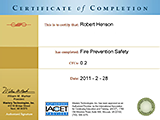Bloodborne Pathogens: An Ounce of Prevention
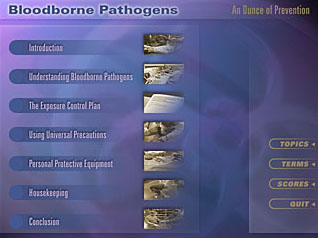
- Product ID
- clbpampg
- Training Time ?
- 50 to 100 minutes
- Language(s)
- English,Spanish,French (Canadian)
- Video Format
- Standard Definition
- Required Plugins
- MasteryNet Player
- Lesson Interactions
- 14
- Quiz Questions
- 23
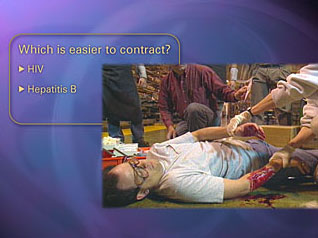
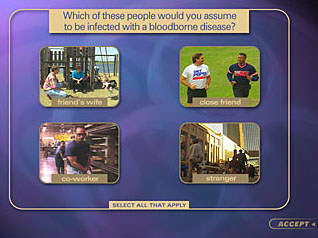
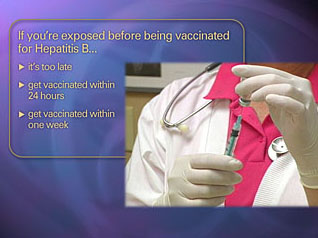
Get your OSHA Bloodborne Pathogen Training Online
In this Bloodborne Pathogen Training course your workers will learn the definition of bloodborne pathogens and how they are transmitted. You will also learn important facts about HIV, Hepatitis B and Hepatitis C. This web based safety training course discusses the OSHA standard and the written exposure control plan that is required for every site. During this bloodborne pathogen training course, your workers will learn the definition of an exposure incident, universal precautions how to use personal protective equipment to prevent an exposure, and proper hygiene. This online safety training course should be included as a required course in every health and safety training curriculum. "Bloodborne Pathogen Training" qualifies for continuing education units.
OSHA REGULATION: OSHA 29 CFR 1910.1030
![]() This course is in the Advantage™ format, to read about Advantage™ features click here.
This course is in the Advantage™ format, to read about Advantage™ features click here.
- Install on any SCORM LMS
- Rich multimedia presentation with interactions and quiz
- Print certificate and wallet card
- You have 30 days to complete the course
- CEUs awarded
All workers
-
Understanding Bloodborne Pathogens
- Defining bloodborne pathogens
- Transmitting bloodborne pathogens
- Chance of infection
- Facts about HIV
- Facts about HBV
- Facts about HCV
-
The Exposure Control Plan
- The OSHA standard
- The written plan
- Contents of the plan
- Training
- HBV vaccinations
- Exposure incidents
-
Using Universal Precautions
- Your attitude
-
Personal Protective Equipment
- Wearing PPE
- Gloves
- Eye protection
- Protecting the nose and mouth
- Protective clothing
- Removing PPE
- PPE disposal
- Personal hygiene
-
Housekeeping
- Clean up procedures
- Waste disposal
-
Adequately assess bloodborne pathogen hazards.
- Define Bloodborne Pathogens.
- Agree that Hepatitis B is easier to contract than HIV.
- Identify how infected blood or body fluids can enter the bloodstream.
- Select activities that present potential risk of exposure to bloodborne diseases.
-
Comply with the exposure control plan.
- State the reasons for an Exposure Control Plan.
- Identify the elements in an Exposure Control Plan.
- Identify employees who should receive a Hepatitis B vaccine.
- Identify the need to be vaccinated within 24 hours after exposure to Hepatitis B if a pre-exposure vaccination did not take place.
-
Use post-exposure follow-up procedures.
- Define an exposure incident.
- List proper procedures to follow when an exposure incident occurs.
-
Use universal precautions.
- Define universal precautions.
- Choose the proper precautions to take in a given injury response situation.
-
Use protective equipment to prevent exposure.
- Name gloves as the personal protective equipment used during any emergency response where blood is present.
- List possible types of protective equipment.
- Describe the protection latex gloves provide.
- Decide what to do in situations where latex gloves could be punctured or torn.
- Identify the purpose of a pocket mask with a one-way valve.
-
Properly handle contaminated PPE.
- Describe how to remove contaminated gloves.
- Identify when gloves should be thrown away.
-
Use proper personal hygiene to protect yourself.
- Agree to wash all exposed skin when exposed to blood or body fluids.
- Recognize the abrasive action of scrubbing as a way to remove skin contaminants.
-
Clean and decontaminate exposed surfaces properly.
- Recognize one part bleach to ten parts water as a common disinfectant for contaminated surfaces.
- Agree that personal protective equipment should be worn whenever cleaning or decontaminating infected or potentially infected surfaces.
-
Properly dispose of blood and bodily fluids.
- Agree to never pick up contaminated sharp objects with gloved or ungloved hands.
- Distinguish both red-colored and biohazard-labeled containers as exclusive means of disposing potentially infectious or contaminated materials.
- Explain the purpose of biohazard containers.
© Mastery Technologies, Inc.

